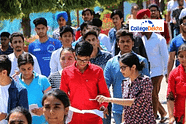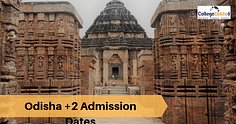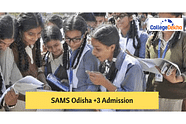
How to Become a Pilot After 12th:
Many students wonder whether they can pursue a
career as a Pilot
right after school. The answer is Yes! You can start preparing for a career in Aviation, be it private or government, as soon as you graduate from school. Before you wonder how to become a pilot after 12th, be assured that this career path can be challenging if you are not dedicated and motivated to be a Pilot. Being a Pilot in the Aviation industry is a rewarding career option as it is one of the most renowned and respectable professions that offers personal and career growth opportunities. As a Pilot, you will have various advantages, such as earning a competitive salary, health benefits, immense scope for career development, and other related benefits.
Apart from this, a wide range of job options are available for Pilots such as Airline Pilots, Commercial Pilots, Civil Aviation, Defense Forces, Flight Instructors, etc. Moreover, flying is not the only thing a student will learn as a pilot. They will be also trained in maintaining the internal mechanics and framing a flight plan. Candidates can either take Pilot training courses after class 12th or sit for entrance exams such as the NDA,
CDS exam
,
AME CET
, and
AFCAT exam
. So, before you choose a course or career pathway, check out the different job roles, eligibility criteria, step-by-step process to become a pilot after 12th and the salary of a pilot in India in this article.
Also Read:
How To Become A Pilot After 12th In India: Career Pathways
Ideally, students who want to land as a Pilot after completing their class 12th can pursue different career pathways mentioned below:
Airline Transport Pilots
Airline Transport Pilots are regarded as the most common types of pilots. These pilots fly with commercial airlines. Candidates need to get the ATP certification to become Airline Transport Pilot. ATP is also one of the most advanced pilot licenses.
Flight Instructors
Flight Instructors are taught about multiple technicalities like instructional design, commercial pilot studies and more. This career has flourished in recent years and is expected to grow. They not only share their learned knowledge with other new pilots, and veteran pilots but also gain experience in the industry.
Private Pilots
Private Pilots can fly during night hours and also at controlled airports. Their training is considered more intensive than sports or recreational pilots.
Recreational Pilots
Recreational Pilots fly heavier aircraft than the Sports Pilots. Their training is not too advanced. They can fly during the day but not in controlled airports. However, with the limited responsibilities, this pilot training is regarded to be the best way to step into the aviation field.
Sports Pilots
Sports Pilots are allowed to fly fighter aircraft at low altitudes. Moreover, they can only carry one passenger at a time. This pilot license is easy to attain. They cannot fly at night hours and above 10,000 feet. Sports Pilots are not enabled to operate in B, C or D airspace.
Commercial Pilots
Commercial Pilots need to attain a commercial pilot license to fly aircraft. They have a specific set of rules and regulations to be followed while flying scheduled aircraft.
How To Become A Pilot In India After 12th: Eligibility Criteria
The eligibility requirements are the significant parameters which decide if a candidate is fit to become a pilot. Check out the eligibility criteria for different types of pilots mentioned below:
Airline Transport Pilots
- Students must be 23 years of age to get an Airline Transport Pilots certificate.
- They are required to serve for at least 1500 hours to be eligible for this pilot certification.
Flight Instructors
- To be eligible for Flight Instructor candidates must have attained a valid Commerical Pilot License (CPL) or Airline Transport Pilots License (ATPL) issued by the Directorate General of Civil Aviation (DGCA).
- Candidates must have served 100 hours of Pilot in Command (PIC).
Private Pilots
- To get a Private Pilot License (PPL) candidates must have their class 10th with a minimum of 50% score.
- Students must be 16 years of age or older to become Private Pilots.
- They should have 40 hours of flight time.
Recreational Pilots
- Students must have 30 hours of flight time out of which 15 hours should be served under the guidance of a professional instructor.
- The age of 17 years and more is considered eligible for a Recreational Pilot License.
Sports Pilots
- They need to serve 20 hours to obtain a Sports Pilot License.
- Candidates must be 16 years of age when they begin their training and 17 when they appear for the test.
Commercial Pilots
- To become a commercial pilot candidates must be 18 years of age.
- They need to have a valid class 1 medical certificate given by the DGCA.
- Candidates must have passed class 12 or equivalent with a minimum of 50% marks to be eligible to become this pilot.
Civil Aviation
- To be a Civil Aviation Pilot, students must have passed class 12 with science from a recognised board.
- Candidates have to attain a Commercial Pilot Certification from the Directorate of General of Civil Aviation in India, which is a certified authority for becoming a Pilot after the 12th.
- Students are also required to fly various aircraft for the designated airline companies after finishing their training at renowned institutes such as Flight Safety Academy, CAE Oxford Aviation Academy and others.
Indian Defense Forces (Air Force)
Indian Air Force pathway can be taken by the candidates who are interested in serving the nation.
- First of all, to get into IAF, students have to appear for entrance exams such as the NDA, CDS or the AFCAT exam.
- The shortlisted candidates will be trained for 3 years at the National Defence Academy. Thereafter they will be able to join the Indian Air Force Academy (IAFA) in the Flying branch.
- Candidates have to qualify a numerical aptitude test, a computerised pilot selection system followed by meeting medical standards such as height, weight and vision.
Students planning to sit for the AFCAT exam and know more about IAF career may also check out these related articles:
Step-By-Step Process To Become A Pilot After 12th
Depending on the job role or career path you choose as a Pilot, the admission and selection process will differ. However, students can start planning early and follow some common steps to become a pilot after 12th. Check out the steps given below:
- Step 1: Choose the Right Stream in 12th Grade - Opt for the Science stream during your 12th grade and make sure to include Physics and Mathematics as compulsory subjects to become a pilot after 12th. These subjects provide the foundational knowledge essential for pursuing studies in aviation.
- Step 2: Research Flight Training Schools - Explore reputable flight training schools in India that offer comprehensive pilot training programs. Look for schools that are approved by the Directorate General of Civil Aviation (DGCA), the regulatory authority for aviation in India.
- Step 3: Meet Medical Requirements - Undergo a thorough medical examination at a DGCA-approved medical facility to secure a Class 1 Medical Certificate. This certificate confirms your physical fitness and suitability for flying.
-
Step 4: Enroll in a Flying School -
Enroll in a flight training program provided by a DGCA-approved flying school. Select a course that aligns with your career goals, whether it's becoming a commercial pilot or a private pilot. The following
flying schools in India
stand out for
Pilot Training
courses after the 12th:
- Indira Gandhi Rashtriya Uran Academy
- Bombay Flying Club
- Rajiv Gandhi Academy of Aviation Technology
- Madhya Pradesh Flying Club
- National Flying Training Institute
- Step 5: Ground School and Theory Training - Participate in ground school sessions where you'll delve into subjects like aviation regulations, meteorology, navigation, aerodynamics, and other essential topics. These theory classes prepare you for the theoretical exams required for pilot certification.
- Step 6: Start Flight Training - Embark on your flight training, gaining hands-on experience in flying an aircraft under the guidance of certified flight instructors. This practical training is a crucial component of your journey to becoming a pilot.
- Step 7: Clear DGCA Examinations - During your training, you'll need to successfully clear written exams conducted by the DGCA, covering various subjects related to aviation. These exams assess your knowledge and understanding of aviation principles and regulations.
- Step 8: Accumulate Flight Hours - Accumulate the necessary flight hours as specified by the DGCA for the type of pilot license you aim to achieve. This includes solo flying, cross-country flights, and additional training hours.
-
Step 9: Earn a Pilot’s License -
After completing the required flight hours, showcasing flying proficiency in a written assessment, and passing a physical test, the importance of confidence and readiness cannot be overstated. Here is a breakdown of the key types of pilot licensing:
- Private Pilot License (PPL): This license grants permission to fly aircraft for personal use. It marks the initial and fundamental phase on the path to becoming a pilot.
- Commercial Pilot License (CPL): A CPL allows you to operate aircraft for commercial purposes. It unlocks opportunities for a career as a professional pilot.
- Airline Transport Pilot License (ATP): The ATP represents the pinnacle of pilot certification. It authorizes you to serve as a captain for commercial airlines.
- Multi-crew Pilot License (MPL): MPL is designed for pilots aspiring to work in multi-crew environments, such as airline operations. Emphasis is placed on developing skills crucial for effective collaboration in cockpit settings.
- Commercial Multi-Engine Land (CMEL): CMEL qualifies you to handle aircraft with multiple engines. This licence enhances your capabilities for piloting larger and more complex aircraft.
- Certified Flight Instructor (CFI): The CFI certification empowers you to teach and guide aspiring pilots. It is a pivotal step for individuals aspiring to share their knowledge and expertise in the field of aviation.
- Step 10: Acquire Additional Ratings (Optional) - Depending on your career aspirations, consider obtaining additional ratings such as Instrument Rating (IR) or Multi-Engine Rating (MER) to enhance your qualifications.
- Step 11: Obtain a Commercial Pilot License (CPL) - For those aspiring to become commercial pilots, continue your training and accumulate the required flight hours. Once eligible, apply for a Commercial Pilot License (CPL) from the DGCA.
- Step 12: Gain Experience and Apply for Jobs - After obtaining your CPL, gain valuable experience by working as a co-pilot or first officer with airlines. As you accumulate more flight hours and experience, you can apply for higher positions, eventually reaching the coveted role of captain.
Note: Always remember that the path to becoming a pilot demands dedication, hard work, and a financial investment. Stay informed about the latest DGCA regulations and industry trends to make well-informed decisions throughout your journey of how to become a pilot after 12th in India.
Cost of Becoming a Pilot After 12th in India
The overall cost of pursuing a career as a pilot after 12th in India can vary, generally ranging from INR 15 lakhs to INR 35 lakhs. Let's break down the key components of these costs:
Pilot Training:
- Student Pilot License (SPL): Typically costs between INR 2 lakhs to INR 5 lakhs. This license marks the beginning of your pilot training.
- Commercial Pilot License (CPL): This crucial license can range from INR 10 lakhs to INR 25 lakhs, covering the core training required for commercial flying.
- Multi-Crew Coordination (MCC) Course: Adding around INR 2 lakhs, this course focuses on developing coordination skills in multi-pilot cockpit environments.
- Airline Transport Pilot License (ATPL) Course: This advanced course, costing INR 5 lakhs to INR 7 lakhs, prepares you for the highest level of pilot certification.
Additional Expenses:
- Medical Examinations: Typically range from INR 5,000 to INR 10,000, ensuring your fitness for flying.
- Books and study materials: Estimated between INR 10,000 to INR 20,000, covering essential educational resources.
- Examination Fees: Usually fall in the range of INR 5,000 to INR 10,000, covering various exam-related costs.
- Accommodation and living expenses: Varies based on location and lifestyle choices during the training period.
- Optional Type Rating: For specific aircraft types, this can range from INR 5 lakhs to INR 10 lakhs, providing additional specialization in aviation.
Note: These figures offer a comprehensive view of the potential expenses involved in becoming a pilot, taking into account training, examinations, and additional living costs. It's essential to consider these factors like the cost of studying while doing your research on how to become a pilot after 12th.
Salary of A Pilot In India
The salary structure of a Pilot in India depends on the sector. As per market research done by Glassdoor and Payscale, commercial pilots are said to have an awesome monthly salary. Check out the sector-wise and job-wise salaries below:
Sector-wise Salary
Refer to the sector-wise salary below:
Sector | Annual Salary (in INR) |
|---|---|
Government (Indian Air Force) | 4,50,000 - 9,00,000 |
Commercial/Private | 15,00,000 - 50,00,000 |
Job role-wise Salary
Check out the job-wise salary mentioned below:
Job | Annual Salary (in INR) |
|---|---|
Airline Pilots | 22,09,000 |
Commercial Pilots | 17,11,000 |
Aviation Manager | 17,74,000 |
Flight Instructors | 32,00,000 |
Skills Required To Become A Pilot In India
Candidates intending to become a Pilot in India must acquire different skills to flourish in their career path. Check out below:
- Strong Communication Skills : Strong communication is one of the significant skills which a candidate must have to become a Pilot in any sector. A Pilot needs to be clear with their communication as they have to be in constant touch with air traffic controllers, cabin crew, co-pilots, supervisors, etc.
- Decision-Making Skills : Be it any weather-related diversions or any kind of emergency, a Pilot may need to make a quick decision at such crucial moments. Thus, an individual needs to be attentive and make well-thought-out decisions during tense situations.
- Leadership and Teamwork Skills : Working with the team and taking charge in any situation will ensure harmony and safety in the flight.
- Situational Awareness : Being aware of the situation and deciding on how to deal with the same is crucial for a Pilot.
- Problem-Solving Ability : Solving a problem by making rational decisions must be attained by a Pilot to ensure the safety of the aircraft.
- Multitasking Capability : Managing multiple tasks such as navigating the aircraft, monitoring instruments and communicating with ATC at the same time is a part and parcel of a Pilot’s job. Thus, multitasking and concentration skills are needed to ensure that each activity is carried out properly and safely.
Candidates who have the zeal to start their career as a Pilot can surely start their journey just after completing class 12. With the right planning strategy, students can easily become a Pilot after 12th.
For more information about the career path through different aviation entrance exams keep checking our College Dekho page.

















Similar Articles
AFCAT Question Paper: Exam Pattern, Paper Analysis, Difficulty Level, Sample
How to Prepare for AFCAT AFSB Interview: Preparation Strategy and Important Tips
AFCAT Physical and Medical Standards 2024
Questions Asked in AFCAT Interview: Check Tips & Tricks
AFCAT Preparation 2024: Subject-wise Tips & Strategy
AFCAT 2024 Exam Day Instructions: What to Carry, Reporting Time